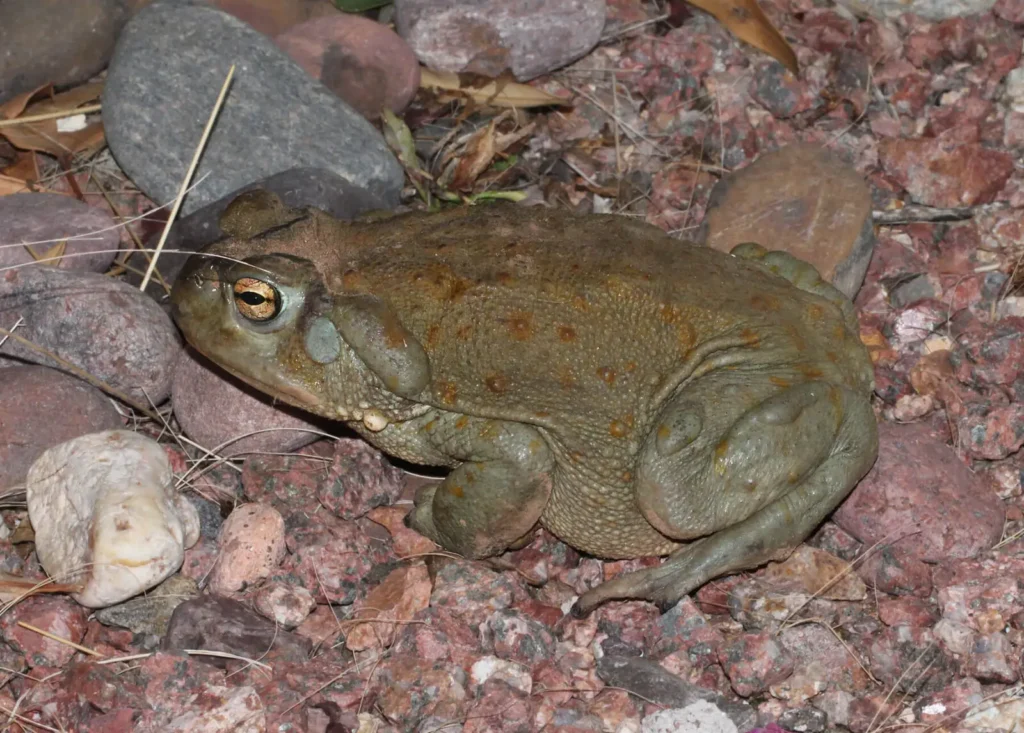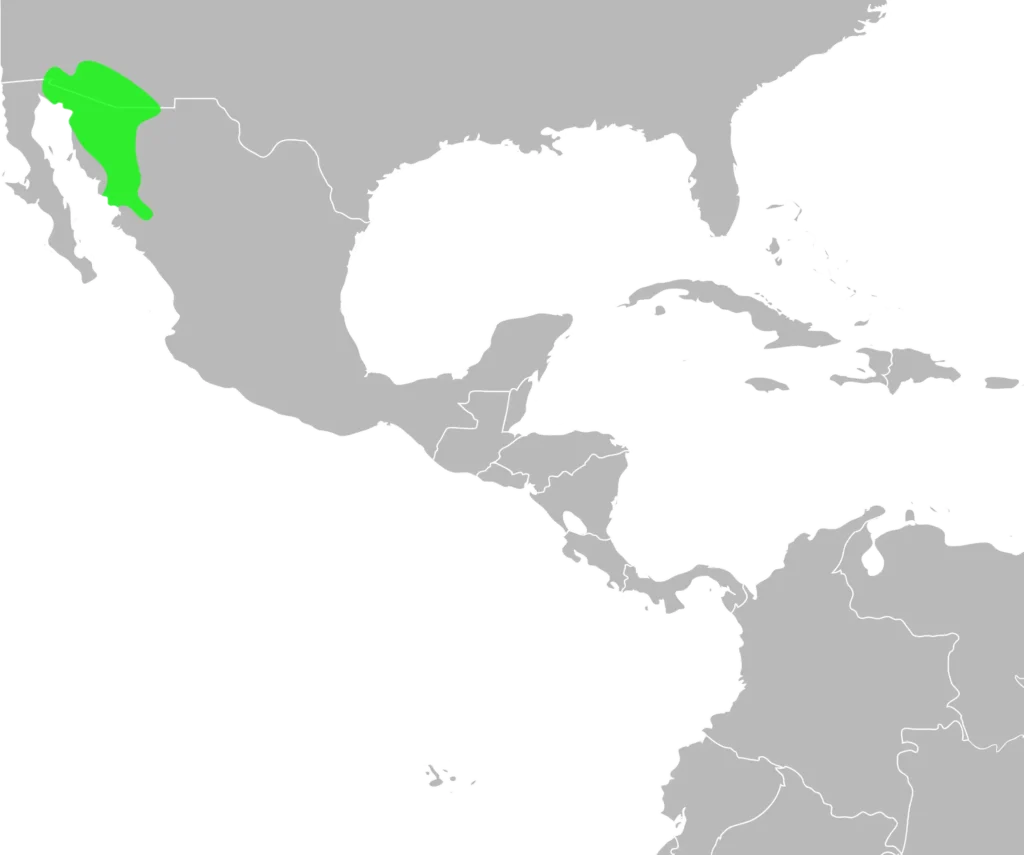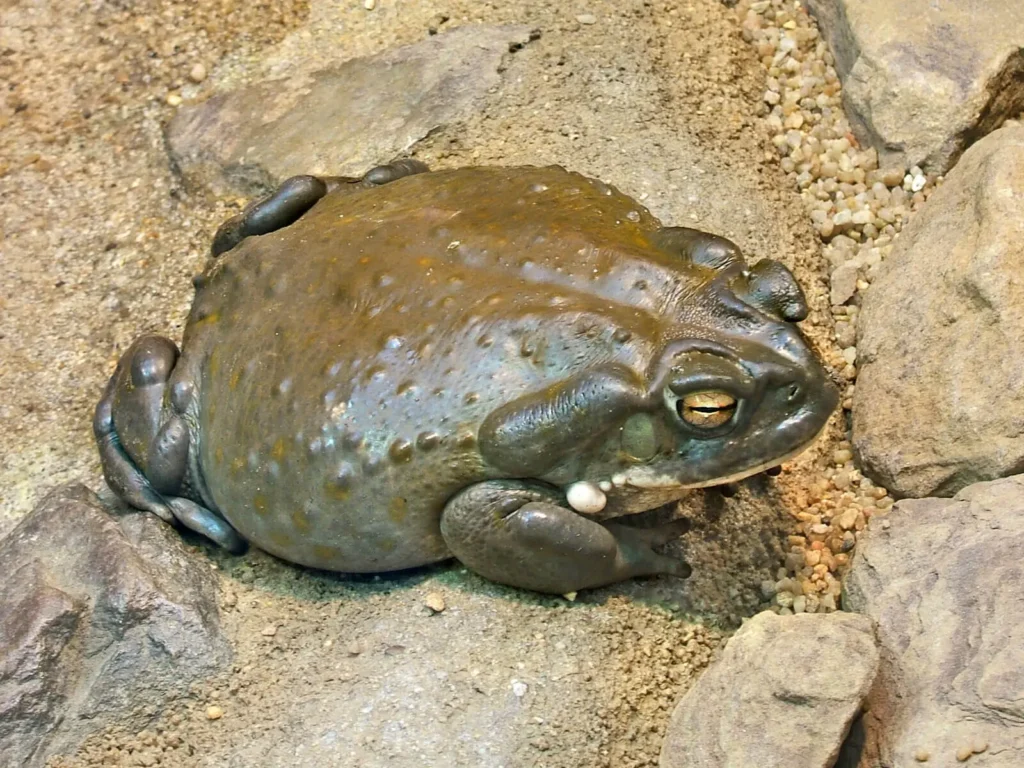The Colorado Frog (Incilius alvarius), also known as sonoran desert frog or bufo alvarius frog, there are one of the largest representatives of frogs in North America. It attracts attention not only for its impressive size, but also for its unique ability to produce powerful psychoactive toxin-5-MeO-DMT.
📌 What's so special about this frog?
✔ It reaches 20 cm in length - one of the largest in the United States
✔ Toxic - releases a dangerous toxin through the skin
✔ Known hallucinogenic effect - frog toxin is used in shamanic rituals
✔ It can live up to 10 years
✔ Adapted to extreme desert conditions
🌎 The frog is an important component of the North American desert and semi-desert ecosystem.

Scientific classification
✔ The Kingdom: Animals (Animalia)
✔ Type: Chordal (Chordata)
✔ Class: Amphibians (Amphibia)
✔ Row: Tailless ones (Anura)
✔ Family: Ropukhovye (Bufonidae)
✔ Gender: Incilius
✔ View: Incilius alvarius
📌 It was formerly classified in the genus Bufo under the name Bufo alvarius, but was later classified in the genus Incilius.
Appearance and description
🐸 What does a Colorado frog look like?
✔ Size: 10-20 cm (females are larger than males)
✔ Weight: Up to 800 g
✔ Colour: Olive green to brown
✔ Smooth skin with poison glands
✔ Bright golden eyes with horizontal pupils
✔ Two large parotid glands (parotids) on the head that secrete the toxin
📌 Unlike most frogs, the skin of this frog is less warty, and it looks smoother and more moist.

Distribution area
🌎 Where does the Colorado frog live?
✔ Southwest USA - Arizona, New Mexico, California
✔ Northern Mexico – Sonora, Chihuahua
✔ Wet areas of deserts and semi-deserts
✔ Lakes, rivers, canals, irrigation systems
📌 This species lives in a desert climate, but for reproduction it needs water bodies.
Lifestyle and behavior
🌞 When is it active?
✔ Nochnaya Street - hides under rocks or in burrows during the day
✔ Most active in summer, during the rainy season
✔ During the dry period, it can fall into hibernation in the ground
🦘 How does it move?
✔ Slower than normal frogs, moves more by jumping than by reptiles
✔ It may appear dead in times of danger
📌 Because of its venom, it has few natural predators, but it still falls prey to snakes and raccoons.

Food and hunting
🍽 What does the Colorado frog eat?
✔ Large insects (beetles, grasshoppers, cockroaches)
✔ Spiders, scorpions, centipedes
✔ Small rodents, lizards, young snakes
✔ Other amphibians
📌 The Colorado frog is an active predator that hunts from ambush, quickly grabbing prey with its tongue.
Reproduction and development
💖 How does reproduction occur?
✔ Rainy season (May-August)
✔ Males croak loudly, attracting females
✔ The female lays up to 8,000 eggs in the water
✔ Tadpoles take 4-6 weeks to develop
📌 After metamorphosis, young frogs leave the pond and adapt to life in the desert.
Life span
⌛ How long does the Colorado frog live?
✔ In nature-5-10 years
✔ In captivity - up to 15 years
📌 In the wild, survival depends on climatic conditions and the number of natural predators.

Toxicity and human impact
⚠ What is the danger of frog venom?
✔ Secretes toxic secretions from the parotid glands (parotides)
✔ Main active ingredient – 5-MeO-DMT and bufotenin
✔ Causes hallucinations, euphoria, change of consciousness
✔ Contact with eyes or mouth may cause paralysis, nausea, rapid heartbeat
📌 Some people use dried frog secretions to produce psychedelic effects, but this is dangerous to health and illegal in many countries.
Natural enemies and threats
⚠ What threatens the Colorado frog?
✔ Snakes, raccoons, large birds of prey
✔ Destruction of the natural environment
✔ Use of frog venom in illegal medicine and drug culture
📌 The population of frogs is declining due to human intervention, although this species is not yet threatened with extinction.
Interesting facts about the Colorado Frog
💡 One of the largest poisonous frogs in North America!
💡 It releases a hallucinogenic toxin that causes altered states of consciousness!
💡 It can hibernate underground during the summer!
💡 Preys on small mammals and snakes!
💡 Its croaks can be heard from several hundred meters away!
Conclusion
Color the colorado frog – a unique, large and venomous amphibian that is an important part of the desert ecosystem. She it not only impresses with its size and behavior, but also attracts people's attention with its poisonous properties.
⚠ However due to human activity, the frog population is decliningtherefore, it is important to preserve their natural environment.
🔥 The Colorado Frog is an amazing creature that continues to amaze scientists and researchers alike! 🐸💚